Branding Campaign Examples
03/30/2025
Branding
Great branding campaigns tell powerful stories—these examples show how it's done.

Let's start by understanding the concept of a branding campaign. How does it differ from a marketing campaign? While they share similarities and the terms are often used interchangeably, branding and marketing are distinct endeavors. A branding campaign primarily focuses on establishing and reinforcing a company's core brand identity while increasing brand awareness and visibility.
.png)


An In-Depth Guide to Branding Campaigns: Examples and Strategies



Various marketing activities like digital advertising, PR, social media promotions, events, and more may be involved.
However, the primary goal of these initiatives is to enhance brand recognition, recall, and affinity among the target audience.
Are you seeking comprehensive guidance on branding campaigns but unsure where to begin?
Schedule a consulting call to find all the answers.
On the other hand, a marketing campaign is centered around promoting specific products, services, or events.
It may incorporate branding activities such as logo design and brand messaging, but the ultimate objective is to drive sales and boost revenue.
Whether you're launching a new product or aiming to build your brand's reputation, a well-executed branding campaign can be an effective strategy to achieve your goals.
To commence your branding campaign, it is crucial to establish your brand's core values, key messaging, and identify the marketing activities that will effectively reach your target audience.
Once you have a solid brand strategy in place, you'll be on the right path to crafting an impactful branding campaign that truly resonates with consumers.
In essence, the two primary goals of any branding or marketing campaign are to increase brand awareness and improve sales.
These objectives often go hand-in-hand, as increased brand awareness tends to correlate with higher sales and vice versa.
Thus, in this blog post, we will use the term "branding campaign" to encompass the specific process of executing initiatives designed to increase brand awareness, drive sales, and foster overall growth for your business.
Engaging with us, a startup branding agency can further tailor these efforts to the unique needs and aspirations of emerging businesses, ensuring a personalized approach to brand building.
In the following sections, we will delve into some superior instances of brand content, campaign management, marketing triumphs, and brand identity. These examples illustrate the power of effective marketing strategies, demonstrating how they can shape perceptions, influence behavior, and create meaningful connections with consumers:
Brand Content Showcases:
- Storytelling is an essential element of brand content. An outstanding example of this is when brands weave captivating narratives that encapsulate their brand's core values and philosophy. This can create an emotional bond with the audience, enhancing their affinity with the brand.
- Video content has become an indispensable tool in the modern marketer's toolkit. Brands that produce captivating and engaging videos successfully articulate their brand message, connecting with the audience on a more personal and impactful level.
- The use of authentic and relatable content on social media platforms has also proven to be effective. When brands post content that resonates with their target audience, they can create a sense of community and deepen relationships with their consumers.
Exemplary Campaign Management:
- The strategic planning and implementation of integrated campaigns across diverse channels is a vital part of campaign management. The coordination of various elements, including different platforms and marketing messages, can amplify the campaign's reach and effectiveness.
- Effective campaign management also entails efficient coordination of resources, timelines, and budgets. By ensuring these aspects are well-managed, brands can improve the likelihood of campaign success and optimize their return on investment.
- Continuous monitoring and optimization of campaign performance is another crucial aspect. This allows for timely adjustments, ensuring the campaign maintains momentum and achieves maximum impact.
Inspiring Marketing Campaigns:
- Innovative product launch campaigns can create a stir and stimulate anticipation among consumers. The excitement generated can lead to heightened brand visibility and potentially, increased sales.
- Email marketing campaigns, when executed effectively, can nurture leads and encourage conversions. By delivering personalized content directly to the consumer's inbox, brands can foster a closer relationship with potential customers.
- Influencer marketing campaigns, when targeted strategically, can extend the brand's reach and enhance its credibility. The endorsement of a respected influencer can boost the brand's reputation and appeal to a broader audience.
- Cold Email marketing campaigns, when executed effectively with the right cold email marketing software, can nurture leads and encourage conversions. By delivering personalized content directly to the consumer's inbox, brands can foster a closer relationship with potential customers.
Triumphant Marketing Successes:
- Dove's "Real Beauty" campaign challenged societal beauty norms by promoting body positivity, resonating deeply with consumers and significantly boosting the brand's image.
Impressive Branding Examples:
- Apple's minimalist and sleek visual identity, embodying simplicity and innovation, is a testament to their powerful branding strategy. It reflects the brand's focus on design and user experience, setting it apart from competitors.
- Nike's impactful "Just Do It" slogan, along with its iconic "swoosh" logo, motivates action and captures the brand's spirit of determination and achievement.
- Coca-Cola's timeless brand identity, which invokes feelings of joy, camaraderie, and refreshment, is one of the most recognized worldwide, exemplifying successful branding.
Noteworthy Publicity Campaigns:
- Old Spice's "The Man Your Man Could Smell Like" campaign went viral and revitalized the brand. The humorous and engaging nature of the campaign significantly boosted the brand's visibility and appeal.
- The "ALS Ice Bucket Challenge," while serving as a fundraising initiative, also functioned as a publicity campaign. It garnered widespread participation and donations, highlighting the effectiveness of engaging consumers in a cause.
- The "Fearless Girl" statue on Wall Street became a powerful symbol for gender# The user's input got cut off. I will use the browsing tool to find examples of campaign descriptions to complete the response.
Goals Of A Marketing Or Branding Campaign



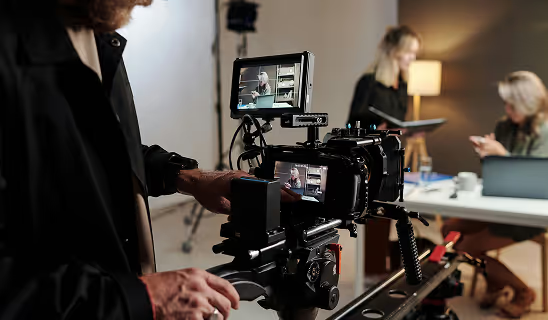








As mentioned above, the ultimate goal of any branding or marketing campaign is to achieve growth as a company or business.
How you measure and determine that growth can be unique to your business and will depend on the type of campaign you decide to execute.
While there are numerous avenues and reasons for launching a branding campaign, there are two main methods of achieving growth. Let’s take a look at them.
Increasing Brand Awareness
Brand awareness is not about you being aware of your own brand (though this is equally important and was discussed in our other blog post on what personal branding means.
Brand awareness is actually about ensuring that the public is not only aware of your brand but they understand what you do and what you’re all about.
Getting you, your business and your brand in front of as many people that are part of your target audience as possible is the goal.
As long as people are talking about you for the right reasons, any initiative that will increase your brand awareness will help grow your business in the long run.
Increasing Sales
Unless you’re running a traditional business where you are selling a product or service, the terms “sales” does not necessarily have to be limited to only the sale of merchandise.
Anything that generates and increases your revenue can be considered as part of your sales.
Whether that’s an increase in monetized website traffic, premium membership sign-ups, etc.
Successful Marketing Campaign Examples
Before you can dive into the execution of your own branding campaign, it's important to look at some examples and get inspired. Here are a few successful marketing campaigns from well-known brands.
• Nike’s “Just Do It” – This simple yet powerful slogan has become one of the most iconic slogans in advertising history and has helped shape Nike’s identity as an athletic brand for decades. The slogan was initially created by Dan Wieden in 1988, but the idea behind it remains timeless and relevant even today.
• Apple’s “Think Differently” – Another classic example of a successful branding campaign is Apple’s “Think Differently” campaign from 1997. This campaign was designed to encourage people to think outside the box and embrace technology as a tool for creativity, something that Apple still stands for today.
• McDonald’s “I’m Lovin’ It” – This iconic slogan from 2003 enabled McDonald’s to become even more recognizable and associated with fun and enjoyment. The campaign helped shift the public perception of their brand from fast food, to a place where friends can hang out and have a good time.
So now you know what it takes to create a successful branding campaign.
The next step is taking action, gathering the right resources, and start forging your own path to success!
Marketing Campaigns for Building Brand Awareness with User Generated Content
User Generated Content (UGC) has become an invaluable tool for brand marketing campaigns. UGC refers to any content that consumers create and share about a brand, product or service.
This type of content can range from reviews and photos to social media posts, videos and blogs.
It’s estimated that 92% of people trust UGC as much as they would advice from friends or family, making it an effective way to build brand awareness.
Some successful examples of using UGC in branding campaigns include:
• L’Oreal Paris’ “Yours Truly True Match” Campaign – This campaign featured real L’Oreal customers wearing makeup products from the company, showing how anyone can look great with the right products. As a result, the campaign successfully increased brand awareness and generated more sales.
• Adidas’ “My Sport is What I Make It” Campaign – This global campaign encouraged people to share stories about how they use their favourite Adidas products in unique and creative ways. The videos generated from this campaign were shared across numerous social media platforms, creating a powerful message for any potential customers.
These are just a few examples of how UGC can be used effectively in branding campaigns.
By giving real customers an opportunity to express themselves, brands can connect with them on a deeper level and build trust through authentic engagement.
Building Brand Loyalty Through Personalization
Personalization is another great way to build brand loyalty and trust.
By personalizing your interactions with customers through email campaigns, social media posts or website content, you can make a customer feel valued and appreciated.
Some successful examples of using personalization in branding campaigns include:
• Amazon’s Personalized Product Recommendations – This feature gives customers product recommendations that are tailored to their individual interests and preferences. This has helped Amazon increase sales by up to 30% and grow the number of repeat customers.
• Coca-Cola’s “Share a Coke” Campaign – Through this campaign, Coca-Cola allowed customers to customize their bottles with names or phrases of their choice. This gave people an opportunity to connect with one another on a more personal level, while also reinforcing the brand’s message of sharing happiness with others.
These are just a few of the ways that personalization can be used in branding campaigns.
By incorporating personalized elements into your marketing strategy, you can ensure that customers feel valued and connected to your brand.
Preparing for a Successful Branding Campaign
A lot goes into preparing a successful branding campaign. It’s crucial that you conduct the proper research and ensure that you are 100% ready to go live with your campaign before introducing it to the world. Launching a branding campaign prematurely without careful planning will be ineffective, return lacklustre results, and ultimately waste time, money, and effort.
Here are some tips and things to consider as you build your branding campaign…
Figure Out Your Goal
It goes without saying that you need to figure out your goal or what you want to achieve with your branding campaign. Having a clear vision of the intended outcome will make it so much easier to build a focused and effective branding campaign.
Understand Your Target Audience
You need to understand who your target audience is and how to connect with them. This goes further than just figuring out their demographic. For a marketing or branding campaign to be effective, you need to truly understand the lifestyles, habits, and preferences of your potential consumers. A great way to figure out your target audience is by using a buyer persona template and creating a semi-fictional representation of your ideal customer.
Know Your Budget
Creating or purchasing advertisements can become expensive depending on the medium you choose to run your branding campaign on. Think about how much you’re willing to spend on your branding campaign. Explore free or cheaper alternatives to traditional marketing strategies, if any. We’ll discuss this in detail later, but running a contest or giveaway on social media can be quite cost-effective and even gain you some free brand awareness.
Be Creative
Come up with a unique and creative concept to catch your audience’s attention. Keep them interested, promote engagement, and build a loyal client base. Word-of-mouth advertising can do wonders, but also make sure your advertisement or branding campaign is easily shareable.
Measure Your Results
After you’ve launched your branding campaign, don’t forget about it or just let it run its course. Figure out how you can measure the results in order to determine whether your efforts have been successful or if there’s room for improvement. Collect and analyze the data and be sure to make a note of any learnings for next time.
Want to learn more about brand platforms, Brand Strategy and Brand Identity? Keep reading!
If you need help with your companies brand strategy and identity, contact us for a free custom quote.
Reasons for Launching a Branding Campaign

Brand Launch
This one is pretty straightforward.
If you’ve created a new business brand or personal brand, building a campaign to launch it and get it in front of the people you want is a no-brainer.
However you decide to structure your campaign for your brand launch, it’s important that it encompasses everything your brand is about.
Your brand is obviously much more than just a name or a logo.
It represents the products and services you provide, your mission statement, and the ideals that guide your decision making.
Before you can even consider building a campaign for a brand launch, you need to ensure that you have a solid personal branding strategy that’s ready to be introduced to the world.
An Email Marketing Campaign can Support your Marketing Efforts
Radical marketing campaigns like social media, print ads and television spots can be used to get your message out there, but an email campaign is a great way to really drive home the point.
An email campaign allows you to deliver personalized messages directly to people who have expressed interest in your business or product.
When executing an email campaign as part of your overall branding efforts, it’s important that you ensure that you’re providing value with each campaign.
You don’t want just send emails for the sake of sending them – make sure they contain useful information that will benefit the reader.
For example, if you are launching a new product or service, be sure to include information about how it can help solve their problem and why they need your product.
Email Marketing Strategies That Can Help
1. Create an Engaging Subject Line: This is the first thing your reader will see when they receive your email, so it’s important that you make sure it stands out from the rest.
2. Send Your Emails on Time: Make sure you’re sending emails at times that are convenient for your readers and not just when it’s convenient for you.
3. Personalize Your Messages: People like to feel special, so include their name in any messages that you send out and address them as if they were a friend or family member.
4. Give Something Away: Offer discounts or free products and services to encourage people to take action on your emails.
5.Typography: Use the right typography to ensure that your messages are legible and easy to read.
6. Add Visuals: Adding visuals like images, videos, or infographics can help you increase engagement with your readers.
7. Focus on Quality Content: Content is still king when it comes to email marketing, so make sure that any content you’re sending out provides valuable information that will keep people coming back for more.
8. Monitor Your Results: Keep track of how your emails are performing by using tools like Google Analytics to measure open rates, click-through rates, etc. This will allow you to adjust your strategy as needed in order to get the best results possible from each campaign.
Rebranding
There are various reasons why a business might feel the need to go through a rebrand.
Whether they want to introduce a new brand name or logo, or they want to revamp their brand image to the public, rebranding may sometimes be necessary.
If you’ve been successful in branding your business or yourself so far, then the rebranding journey can be a difficult one.
Getting a new idea or brand into the minds of your audience can be a task in and of itself, but now you need your audience to forget what they already know about you and accept your new brand identity.
A strong rebranding strategy is crucial if you wish for your rebranding campaign to succeed.
Product Launch
Another common reason to execute a marketing or branding campaign is to introduce the launch of a new product (or service) that you’re offering to your audience. You want to raise awareness for your product and convince your potential consumers that they need your product or service and that they shouldn’t go anywhere else for it. As mentioned earlier, knowing your target audience is important with any type of branding or marketing campaign, but especially so with a product launch. With proper research, you should know exactly who you’re offering your product or service to as well as the best methods to reach them.
Seasonal Push
Similar to a campaign for a product launch, a seasonal push campaign is one that’s used to raise awareness for a new product or service you’re offering due to the change in season or time of the year. Depending on what type of business you’re running, you may have a need to provide different products or execute different initiatives during certain holidays like Thanksgiving, Boxing Day, Christmas, etc. It’s likely that certain times of the year could potentially be more lucrative for your business so it’s important that you have a strong marketing and branding campaign that will drive traffic to you and help you acquire sales.
Types of Branding Campaigns
Just as there are various reasons for launching a branding campaign, there are equally as many (if not more) methods to do so. Whether you’re building a campaign for a brand launch, a product launch, or a rebranding initiative, all of the methods below are viable options.
Whichever avenue you decide to explore will largely be dependent on who your target audience is, which again is why it’s of the utmost importance to invest the proper time into understanding who you’re hoping to reach with your campaign. Below are some common branding campaign examples.
Television and Radio Campaign
Bringing your marketing or branding campaign to the television or radio realm is a tried and true method of increasing brand awareness and sales, so long as you’ve conducted the proper research.
Which channels are going to run your advertisements and at what times?
Are you sure your target audience will be in front of the television when your advertisement comes on?
The same goes for radio advertisement campaigns.
Which radio stations will you partner with?
Are you going to be running your own advertisement or have the radio host promote your product or brand for you?
All important things to consider.
Podcasts are another increasingly popular medium to run a branding campaign or advertisement on.
The neat thing about this is that many times podcasts have a very specialized, dedicated, and niche following.
If your company is providing a product or service that fits their needs, you have potentially gained direct access to your target audience.
Print Media Campaign
Whether it’s through an advertisement in a newspaper or a magazine, if it suits your business and brand, running a branding campaign using print media can be useful in reaching your target audience.
With so many different ways for people to consume content and receive their news, running a print advertisement in a newspaper can seem like an old-fashioned strategy.
While that may be true to a certain extent, if done correctly, running a print media campaign can still be effective especially if it’s for a local or specialized community.
Email Campaign
An email marketing or branding campaign can be a highly effective method of reaching out to your target audience or existing clientele.
Chances are that if someone’s email address is already on your mailing list, it’s because they are already either interested in your product or have purchased from you before.
Perhaps they’ve subscribed to your mailing list wanting to stay updated about future offers or maybe they provided an email address when completing their transaction.
Either way, email campaigns are largely used to communicate sales, promotions, and other information to an audience that is already aware of your brand or product.
Mail Campaign
Ah, snail mail. Though you might not think it, incorporating mail advertisements into your campaign can be effective as well.
If you have mailing addresses for your customers, then you could potentially send them mail or a letter announcing a sale, promotion, or other special events.
If you have the capacity to personalize the mail by addressing your client by name, that’s a bonus.
Receiving and holding a tangible, physical piece of mail as opposed to reading an email blast, can feel much more significant and thoughtful as a consumer.
Similar to running a print advertisement in a local newspaper, if you’re a small business wishing to attract interest from your local community, you may want to send out flyers and advertisements directly to the people in your area instead.
Social Media Campaign
Social media is a beast of a tool for running a successful branding campaign. The options are numerous and the opportunities limitless.
If done correctly, the potential number of people you might be able to reach with a strong, creative social media campaign can be astonishing.
Obviously, within the social media world, there are various platforms at your disposal such as Twitter, Instagram, Facebook, etc.
The demographic of your target audience will determine how effective a particular social media platform will be and therefore should be carefully considered when planning out your marketing or branding campaign.
Each social media platform functions differently and will shape how your campaign looks and feels.
Even once you’ve chosen the social media platform/s you’ll be using to run your branding campaign, there are various options on the type of message you want to deliver.
Contest Campaign
Marketing or branding campaigns involving a contest or giveaway can be highly effective in increasing customer engagement and overall brand awareness.
While contest campaigns can be successfully run using a few of the different branding campaign types above, they are probably most popular on social media platforms.
Common contest campaign examples are giveaways on Instagram.
Instructions are simple enough and typically include some of these rules: follow the account of the business providing the giveaway, like and or repost their contest post, tag 1-3 friends. You can easily see why these campaigns work so well.
You’ve engaged with your target audience and added to your clientele base while having your audience assist with increasing brand awareness by tagging their friends.
Assuming the entire experience is a positive one, whoever ends up winning your giveaway will likely be more than happy to promote the prizes and with it, your company.
Some Branding Campaign Examples

As you probably know, the Super Bowl is a behemoth of a platform when it comes to advertisements and marketing or branding campaigns.
The biggest brands dish out millions of dollars to have a 30-second clip broadcast on the air.
Why?
Because these ads are guaranteed to get in front of the eyes of nearly 100 million people.
With that being said, Super Bowl ads are full of great marketing and branding campaign examples.
Feel free to check out all of the 2021 Super Bowl commercials and advertisements to figure out what you liked or didn’t like.
What was effective? Why did some of these work for you as opposed to the others?
One particularly interesting campaign from Super Bowl LV was a contest from Mountain Dew to promote their new flavour MTN DEW MAJOR MELON.
First, they introduced and explained the contest: count all the bottles of Mountain Dew in a 30-second ad that they’ll be airing on Super Bowl Sunday and get a chance to win $1 million.
All you need to do is go on Twitter and tweet them the exact number of bottles. Then, of course, they aired the ad and as expected, people were frantically trying to be the first to tweet the correct answer.
It’s no surprise that Mountain Dew saw a huge increase in Twitter followers (nearly 50,000).
It’s interesting to think about, but obviously, not everyone can afford a Super Bowl TV spot.
It’s important to remember that money isn’t everything when it comes to building an effective branding campaign.
Be creative, focus on targeting the right people in the most effective and efficient way and you’ll be sure to see great results.
There are many branding campaign examples out there, but some of the most successful ones have been executed by top-tier branding agencies.
Another example is The Branded Agency, We are a premier branding agency that specializes in creating impactful branding campaigns for businesses of all sizes and industries.
One of our recent projects was for a new startup company in the food and beverage industry.
We worked closely with our client to create a branding campaign that would help them stand out from their competitors and build a strong brand identity in the eyes of consumers.
This included designing an eye-catching logo, crafting powerful messaging and positioning statements, developing a comprehensive social media strategy, and launching various marketing campaigns across different channels.
Overall, the branding campaign was a huge success, and the client saw significant increases in brand awareness and sales in just a few short months.
Marketing Campaign Examples that used Social Media Marketing
There are a plethora of Marketing campaign examples out there that used social media marketing to great success.
One such example is Fanta's global “Make Taste Happen” campaign.
The goal of the campaign was to connect with millennials and increase brand awareness in a fun and engaging manner, while also driving sales growth.
The strategy focused on creating content that would capture the attention of its target audience and drive social engagement.
They created visually appealing videos featuring influencers who shared their unique stories and experiences related to Fanta’s new flavors.
They then targeted these videos directly to their target audiences via various social media channels including Facebook, Instagram, YouTube, Twitter, and Snapchat.
To further amplify their reach, they also ran paid ads across social media channels.
In addition to the videos, Fanta also created a series of interactive games and quizzes to engage their audience and drive brand loyalty.
They also ran digital influencer campaigns in several countries to further increase reach and engagement.
The Marketing campaign was very successful, with an overall reach of over 204 million people across all platforms, an impressive 515 thousand likes on Facebook and almost 6 million views on YouTube.
These results are clear evidence of how effective social media marketing can be when it comes to creating a successful branding campaign.
No matter what your budget is or the size of your business, there are always creative ways for you to market your brand effectively using social media. So get out there and start building your brand!
Influencer Marketing Campaigns
There are many Influencer marketing campaigns examples out there that you can use for inspiration.
One example is the recent campaign by Levi’s called “Live in Levi’s”.
For this campaign, Levi’s partnered with several influencers from around the world to create content showcasing their everyday lives wearing different items of clothing from the brand.
The influencers were chosen based on their relevance and influence within their respective communities.
They then created content featuring them doing various activities such as going on a bike ride, playing a game of basketball, or just hanging out with friends while wearing Levi’s products.
This authentically communicated the brand message to viewers in an engaging way and resulted in an impressive 8 million likes across all platforms are so many great influencer marketing campaigns examples out there that you can use to help you create a successful strategy for your own brand.
Whether you’re looking to increase brand awareness, drive sales, or build customer loyalty – influencer marketing is an effective and cost-efficient way to reach your goals.
What are successful promotional campaigns?
example of promotional campaign
Success includes Coca-Cola's Share a Coke campaign.
This campaign centered around personalizing bottles of the iconic soda with people's names and encouraging customers to share those personalized drinks with their friends and family over social media.
By turning a simple product into something special, Coca-Cola was able to create an emotional connection with its target audience that resulted in increased sales and brand loyalty.
Another successful promotional campaign is Apple's "Get a Mac" campaign, which ran from 2006-2009.
This campaign featured two characters - a hip young man representing the Mac computer, and an out of touch older man representing the PC.
The humorous ads highlighted the advantages of using a Mac over a PC in an entertaining way that resonated with the company's target audience.
The campaign was so successful that it led to an increase in Mac sales, giving Apple a significant competitive advantage in the computer marketplace.
Nike's Just Do It campaign is one of the most iconic and successful advertising campaigns in history.
This campaign was created in 1988 and featured the famous slogan "Just Do It."
The slogan was accompanied by images of athletes pushing themselves to the limit and its message resonated with many people around the world.
As a result, it helped Nike become one of the most recognizable brands in the world and is still used today.
These are just a few examples of successful promotional campaigns that have had a long-lasting effect on their respective brands.
Brand Advertising Definition:
Brand advertising is a form of advertising that focuses on creating an emotional connection between the customer and the brand.
It uses storytelling, emotion, and visual elements to create an image in order to help differentiate the brand from its competitors.
Brand advertising typically uses long-term campaigns to build awareness and familiarity with the product or service.
The goal of brand advertising is to create a loyal customer base that will remain loyal over a long period of time.
Marketing Campaign Meaning:
A marketing campaign is a coordinated series of activities that are designed to promote a product or service.
It includes activities such as advertising, public relations, promotions, and customer engagement.
The goal of a marketing campaign is to create awareness for the brand or product, build loyalty with existing customers, and ultimately generate leads and sales.
By carefully planning a campaign and executing it strategically, brands can effectively reach their target audience and achieve desired results.
Brand Campaign vs Marketing Campaign:
Brand campaigns and marketing campaigns are two different things.
Brand campaigns focus on creating an emotional connection with customers and long-term brand awareness whereas marketing campaigns are usually focused on short-term sales goals.
Marketing campaigns often use incentives, discounts, or special offers to encourage customers to purchase right away instead of building up loyalty over time like a brand campaign does.
Ultimately, the goal is to use both types of campaigns to create a strong and successful brand that customers recognize and trust.
Key Takeaways:
• Successful promotional campaigns focus on creating an emotional connection with their target audience.
• Brand advertising uses storytelling, emotion, and visual elements to differentiate a product or service from its competitors.
• Brand campaigns focus on creating brand awareness and loyalty over the long-term while marketing campaigns are usually focused on short-term sales goals.
• It’s important to use both types of campaigns in order to create a strong and successful brand.
• Successful promotional campaigns focus on creating an emotional connection with their target audience. • Brand advertising uses storytelling, emotion, and visual elements to differentiate a product or service from its competitors.
Some Campaign Theme Examples:
• “Live your best life” – A campaign that encourages people to strive for the best version of themselves.
• “Unleash creativity” – A campaign that celebrates creativity and encourages people to express their unique ideas.
• “Be fearless” – A campaign that empowers people to take risks and be brave.
• “Live life to the fullest” – A campaign that encourages people to make the most out of each day.
• “Dream Big” – A campaign that inspires people to follow their dreams, no matter how big or small they may be.
• “Be yourself” – A campaign that encourages people to embrace their own individuality.
• “Pursue passions” – A campaign that encourages people to pursue the things they are passionate about.
• “Experience life” – A campaign that inspires people to explore the world and experience new things.
• “Think Differently” – A campaign that encourages people to think outside the box and challenge the status quo.
• “Live authentically” – A campaign that encourages people to be true to themselves and live their lives with integrity.
• “Be Bold” – A campaign that encourages people to take risks and always strive for more.
• “Create change” – A campaign that encourages people to make a difference in the world and be agents of positive change.
These are just a few potential brand campaigns that could be used to create an emotional connection with customers and build long-term loyalty for a product or service.
Affinity Marketing
affinity marketing strategies and affinity partnerships are a great way to create a loyal customer base.
This type of marketing involves creating meaningful relationships with customers, often through shared interests or values.
By appealing to certain segments of the population, brands can effectively target and reach their ideal audience.
Affinity partnerships involve leveraging existing relationships and networks in order to build brand awareness and loyalty.
Examples of affinity marketing campaigns include:
• A sports team offering discounts to its season ticket holders.
• An outdoor clothing company partnering with an outdoor adventure travel company.
• An automotive company collaborating with a local driving school to offer discounted rates.
• A beer brewery launching a loyalty program for its customers.
• An animal welfare charity collaborating with a pet food company to provide discounts and promotions.
These are just a few examples of how brands can use affinity marketing strategies to create meaningful relationships with their customers and build long-term loyalty.
There you have all the information you need on branding campaign examples.
If you need further guidance on branding and Digital Marketing Strategies, feel free to reach out to us and we can chat about it.
We’re a digital marketing and branding agency that can help you scale your business, build your brand foundations and more.

Sloane Avery
As entrepreneurs, they’ve built and scaled their own ventures from zero to millions. They’ve been in the trenches, navigating the chaos of high-growth phases, making the hard calls, and learning firsthand what actually moves the needle. That’s what makes us different—we don’t just “consult,” we know what it takes because we’ve done it ourselves.
Want to learn more about brand platform?
If you need help with your companies brand strategy and identity, contact us for a free custom quote.
We do great work. And get great results.
+2.3xIncrease in revenue YoY
+126%Increase in repurchase rate YoY
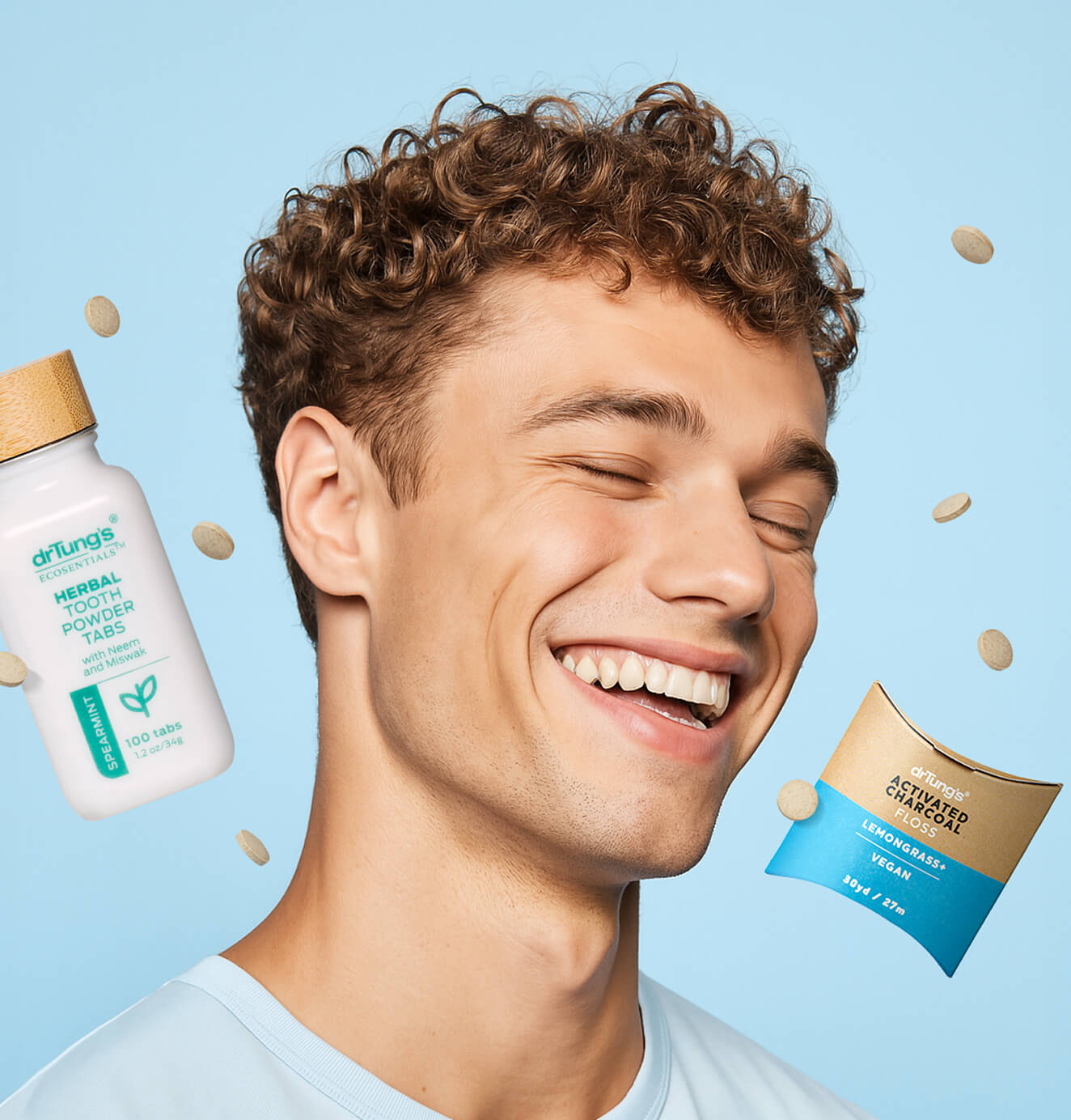
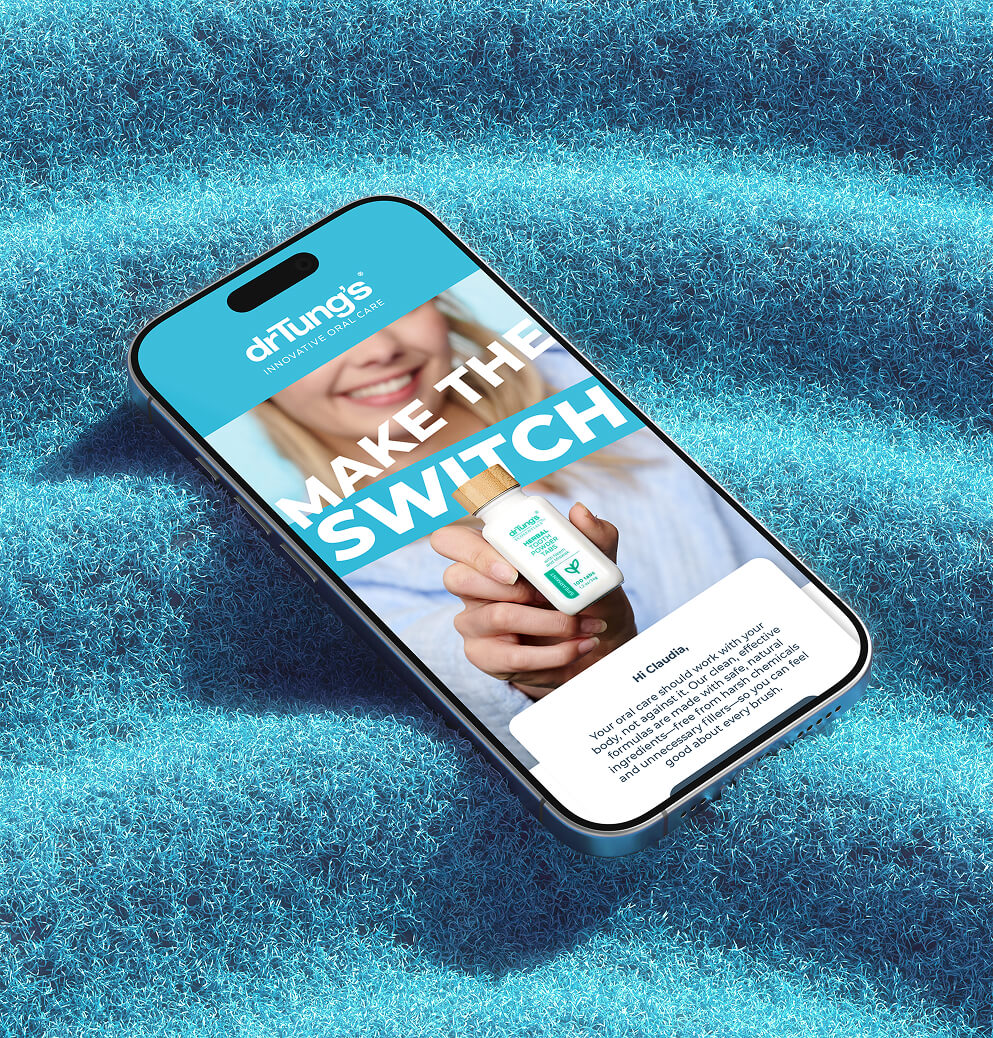

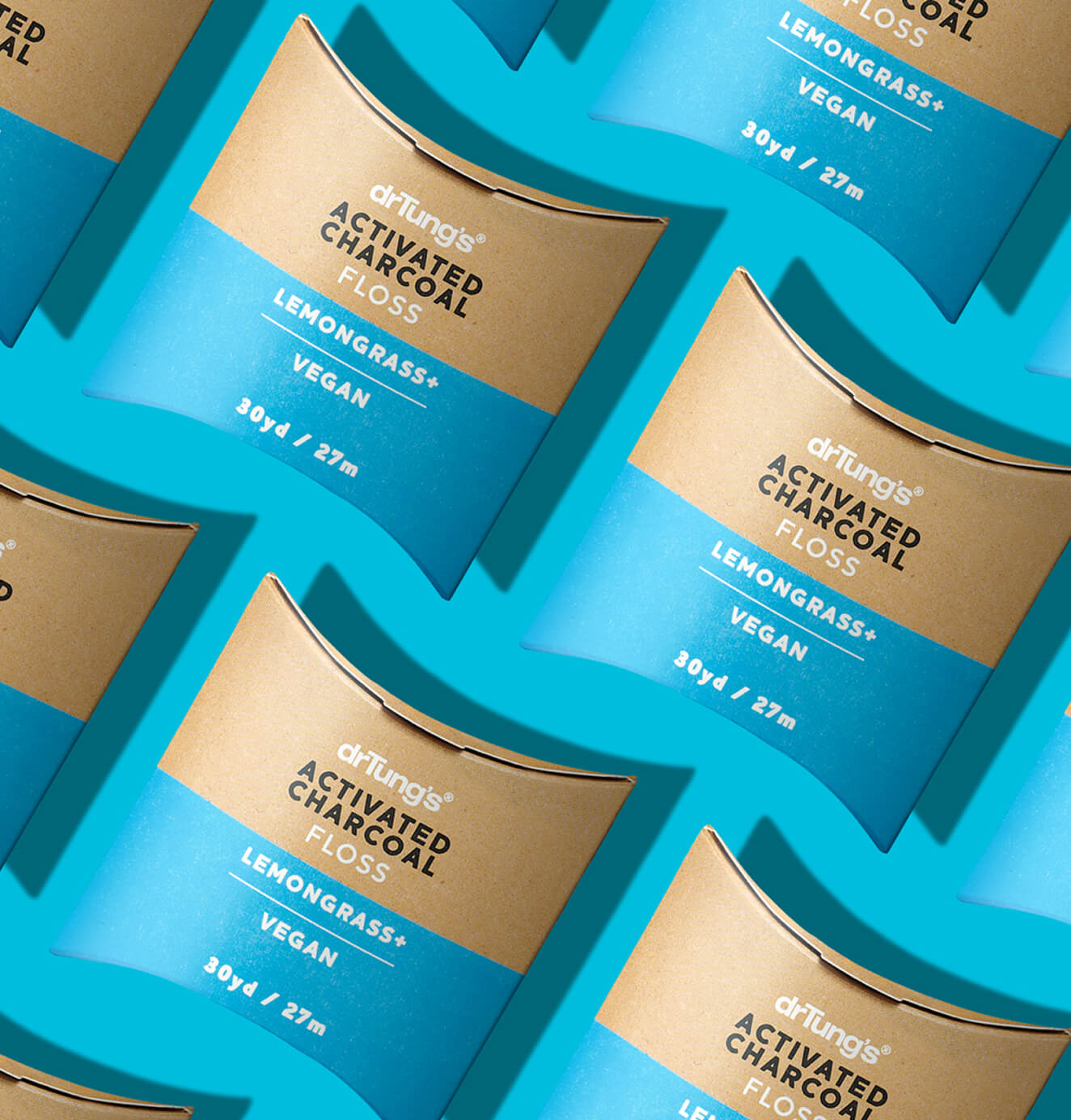




+93%Revenue growth in first 90 days
+144% Increase in attributed revenue


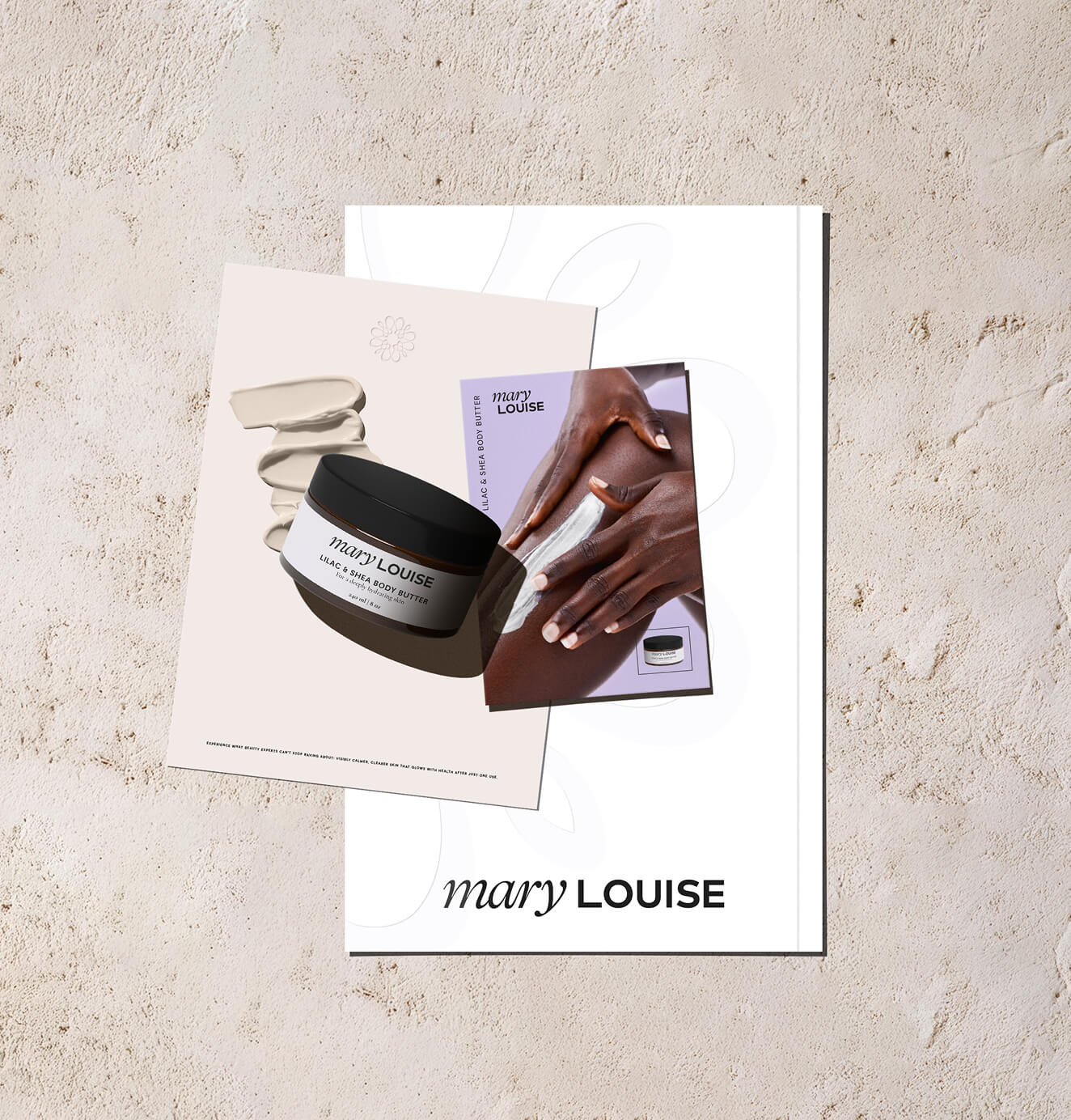





+91%Increase in conversion rate
+46%Increase in AOV


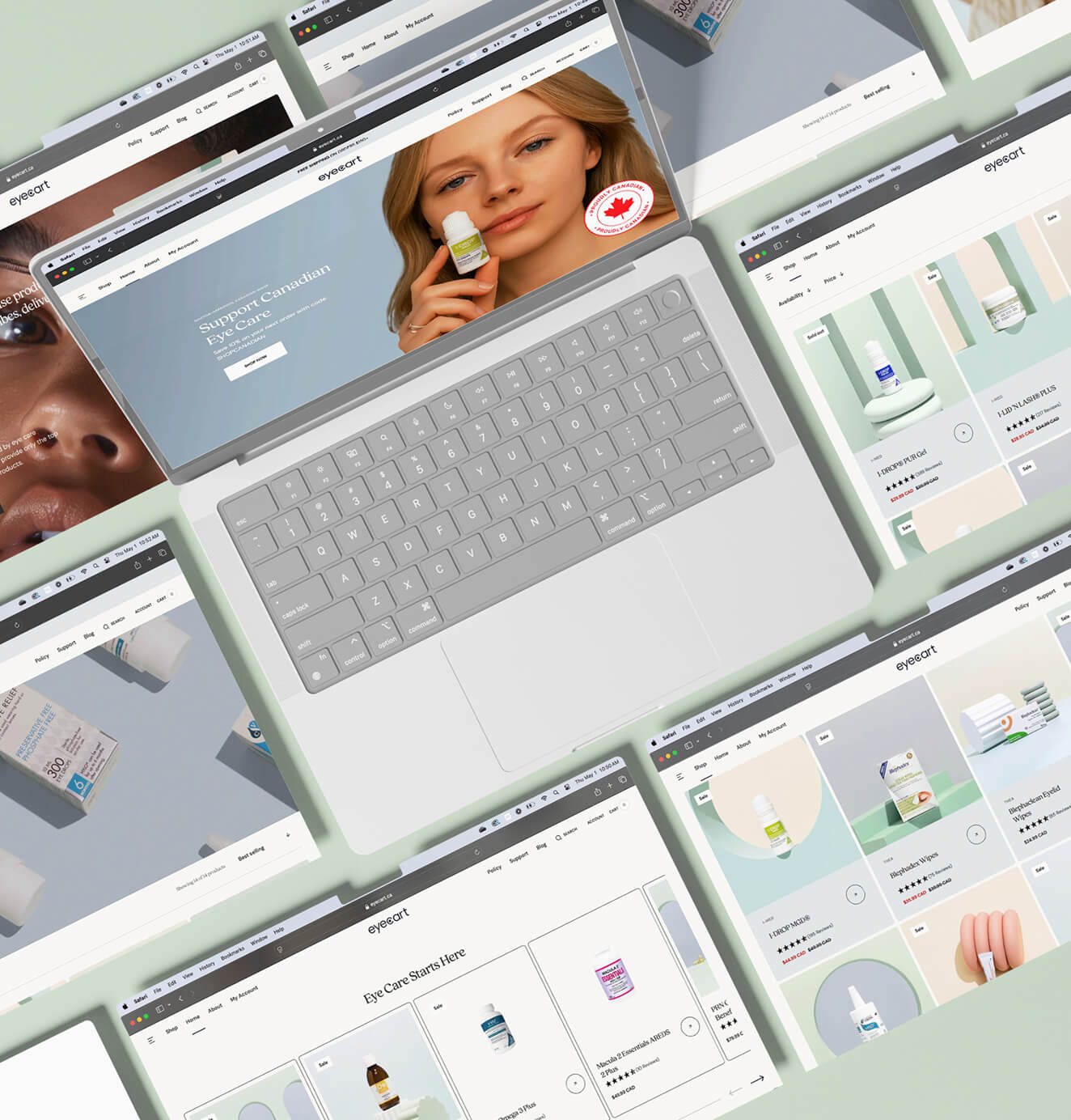





+200%Increase in conversion rate
+688%Increase in attributed revenue












